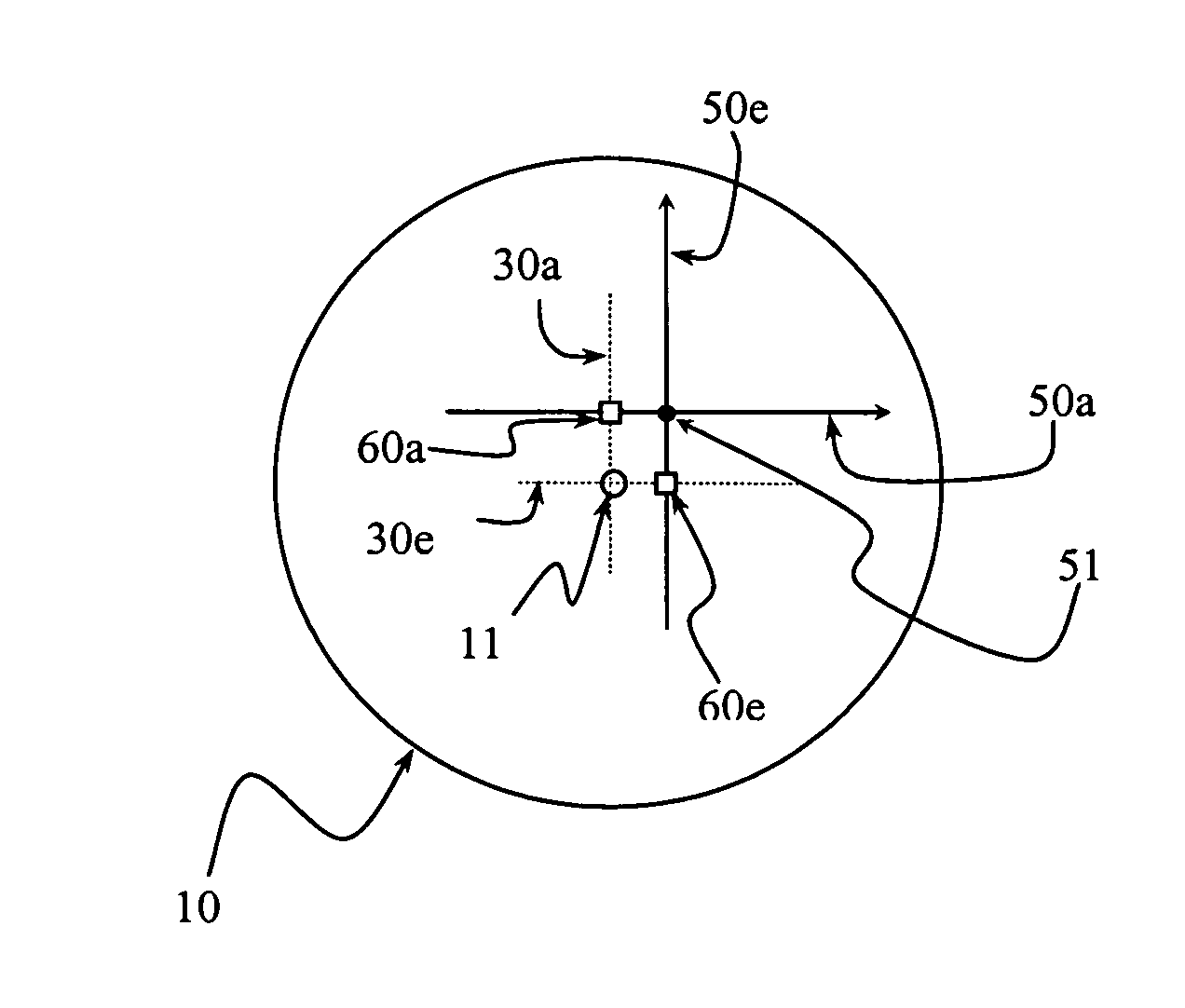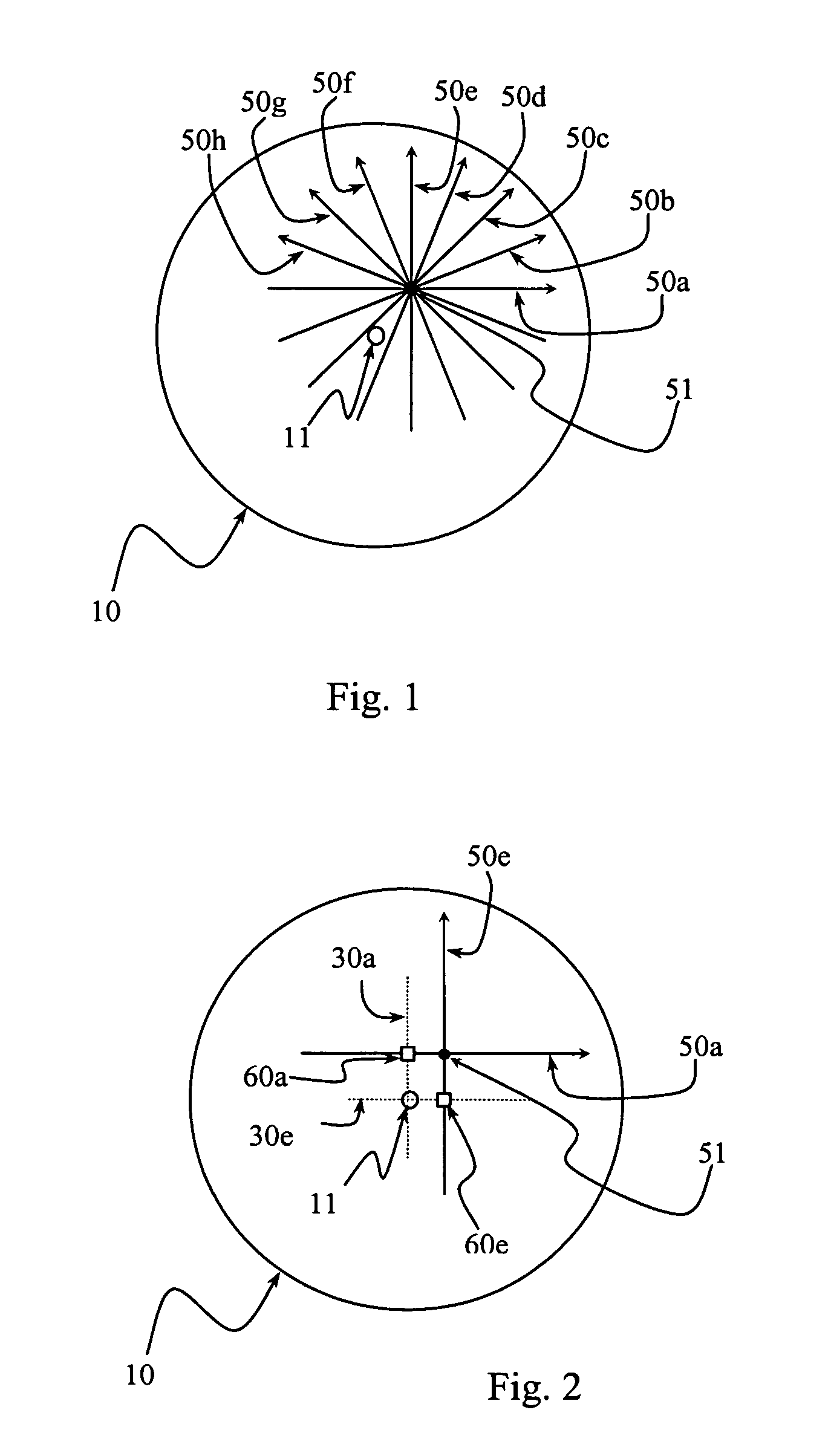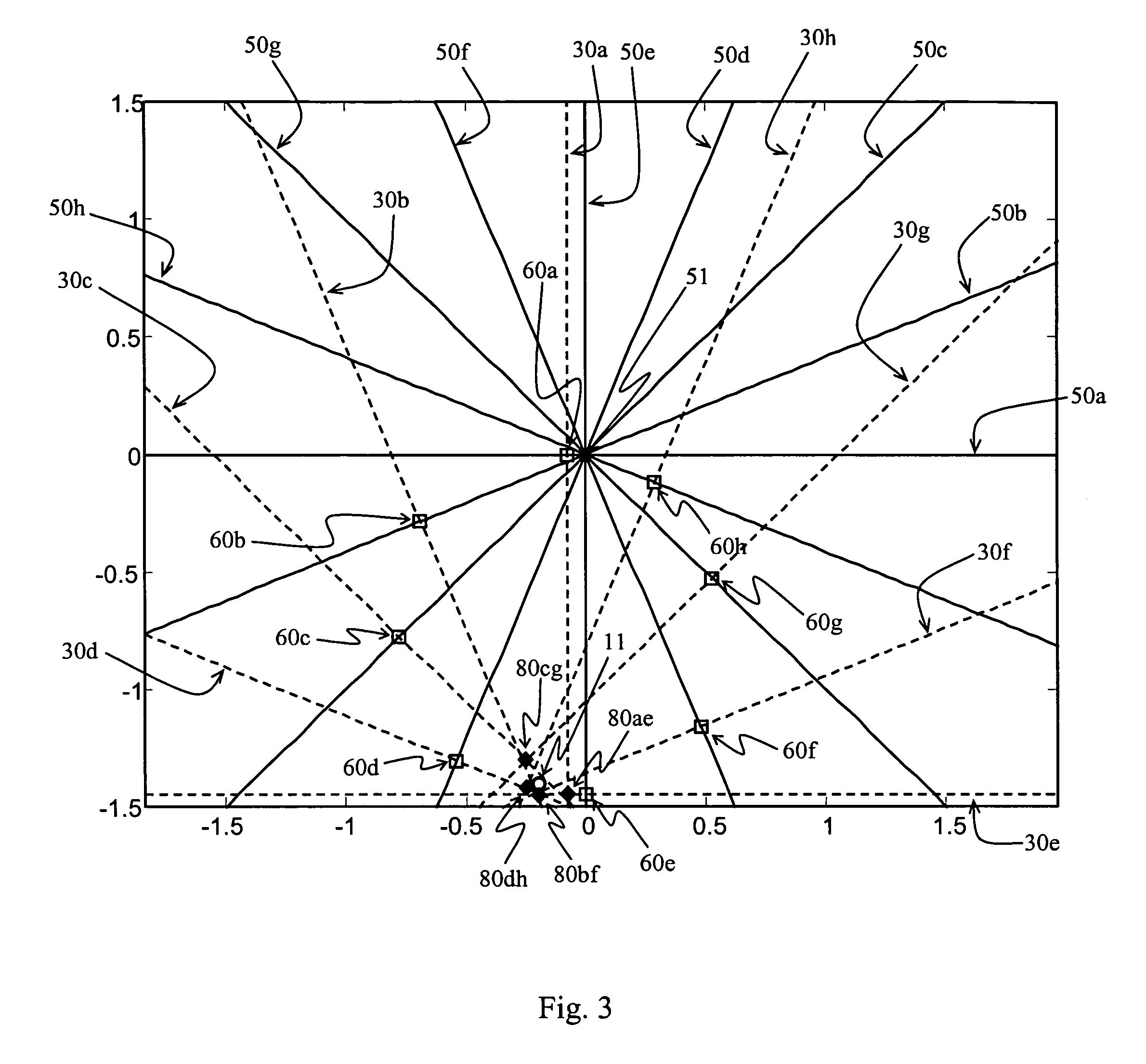Image adjustment derived from optical imaging measurement data
a technology of optical imaging and measurement data, applied in the field of optical medical imaging, can solve the problems of compounding alignment problems, decentricity errors are known to create errors in pm, eye movement is known to generate artifacts in displayed images, etc., to ensure repeatability of thickness measurements, minimize misalignment, and improve image of eye derived from scan lines
- Summary
- Abstract
- Description
- Claims
- Application Information
AI Technical Summary
Benefits of technology
Problems solved by technology
Method used
Image
Examples
Embodiment Construction
[0028]Anterior Chamber Optical Coherence Tomography (“AC-OCT”) is a state-of-art technology for anterior chamber imaging. AC-OCT can produce a corneal thickness map (Pachymetry map). The Pachymetry map is generally derived from a plurality of B-scans, though, there is no reason that this could not be derived from any sufficiently densely placed collection of scan lines. Most commonly, a B-scan is a collection of scan lines within a plane. A B-scan display is often called a tomogram. The tomogram is derived from measurement data in depth along scan lines and in breadth across the scan plane (the B-scan). AC-OCT measurement data is typically collected along scan lines, where the lines extend from the diagnostic instrument into the eye, with the lines collected across a plane (B-scan).
[0029]FIG. 1 illustrates, in projection, a typical AC-OCT scan pattern for measuring corneal thickness. This scan pattern is a fan of B-scans intersecting at a common center 51. For more uniform resolutio...
PUM
 Login to View More
Login to View More Abstract
Description
Claims
Application Information
 Login to View More
Login to View More - R&D
- Intellectual Property
- Life Sciences
- Materials
- Tech Scout
- Unparalleled Data Quality
- Higher Quality Content
- 60% Fewer Hallucinations
Browse by: Latest US Patents, China's latest patents, Technical Efficacy Thesaurus, Application Domain, Technology Topic, Popular Technical Reports.
© 2025 PatSnap. All rights reserved.Legal|Privacy policy|Modern Slavery Act Transparency Statement|Sitemap|About US| Contact US: help@patsnap.com



